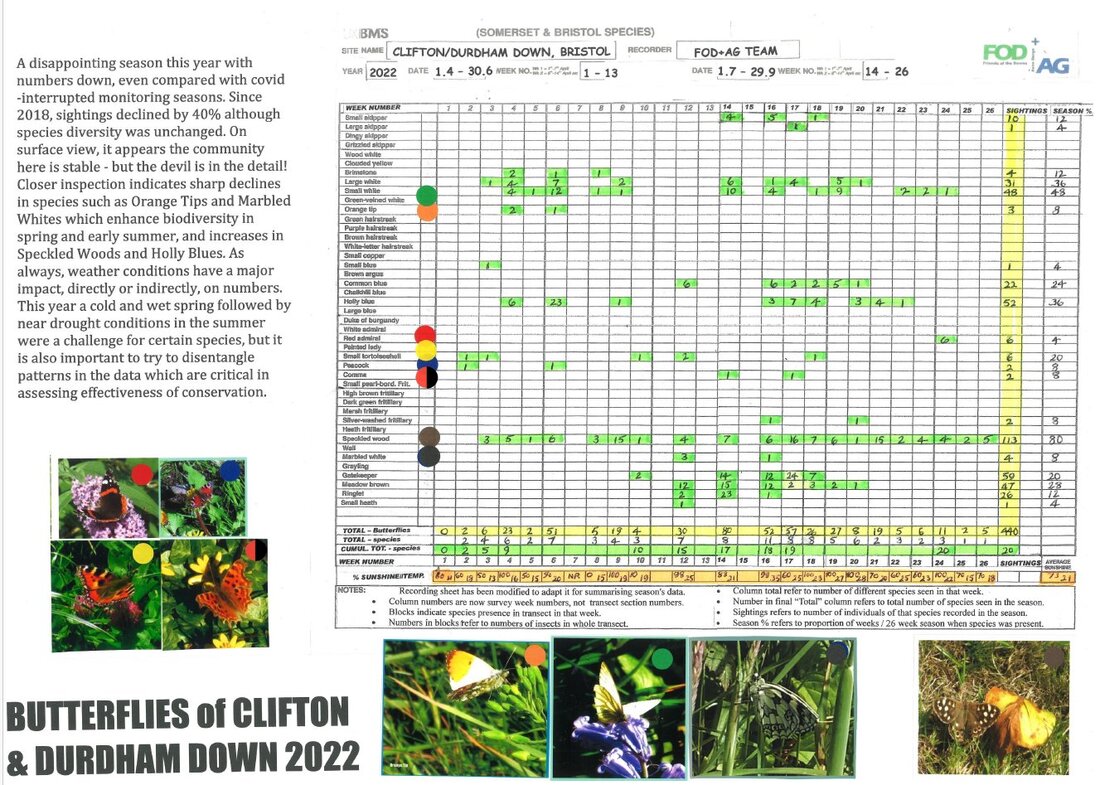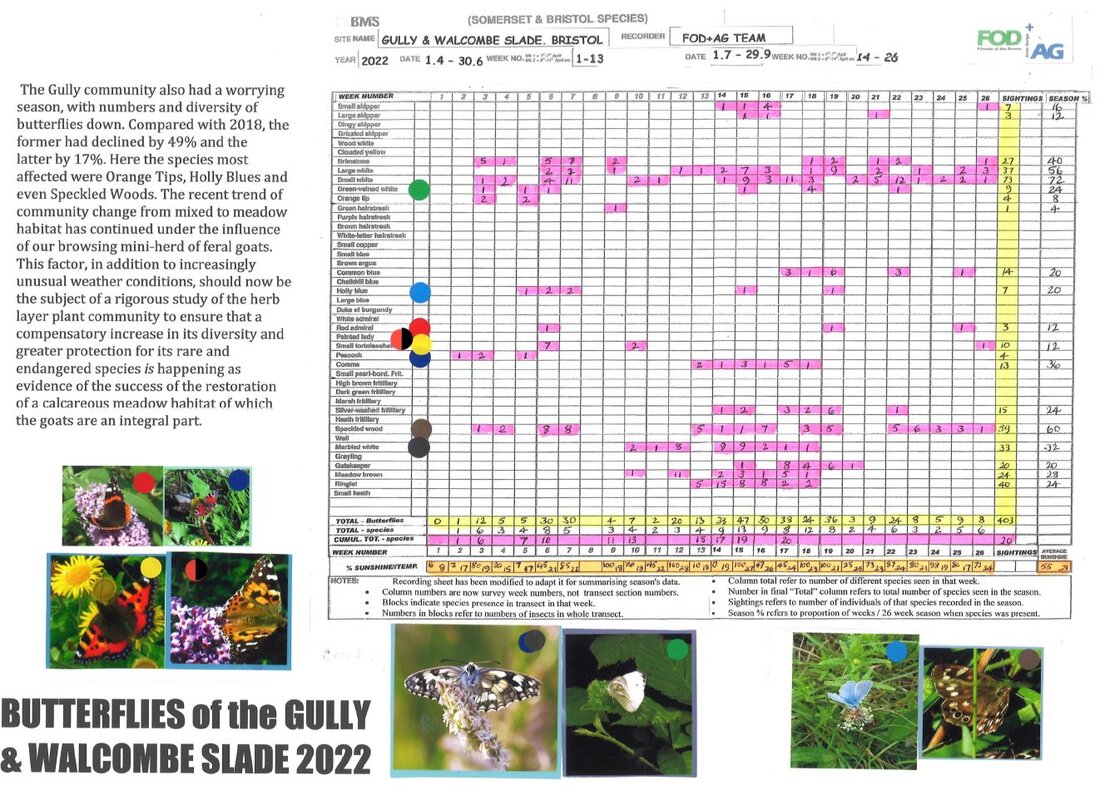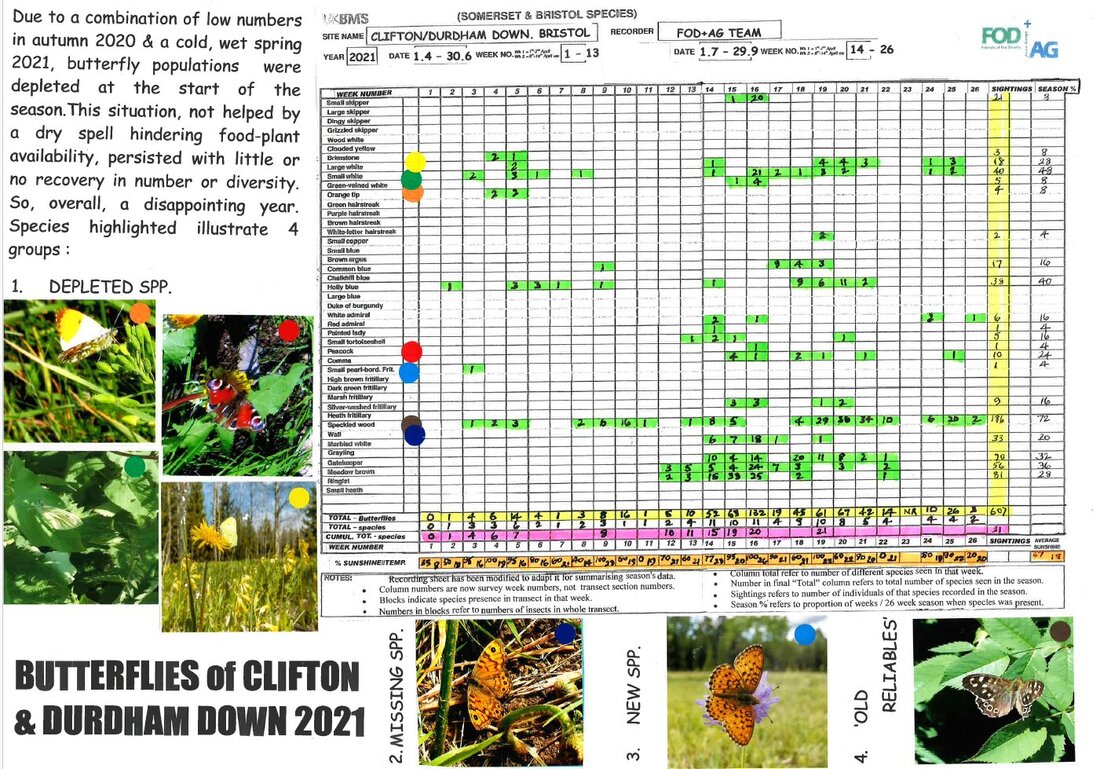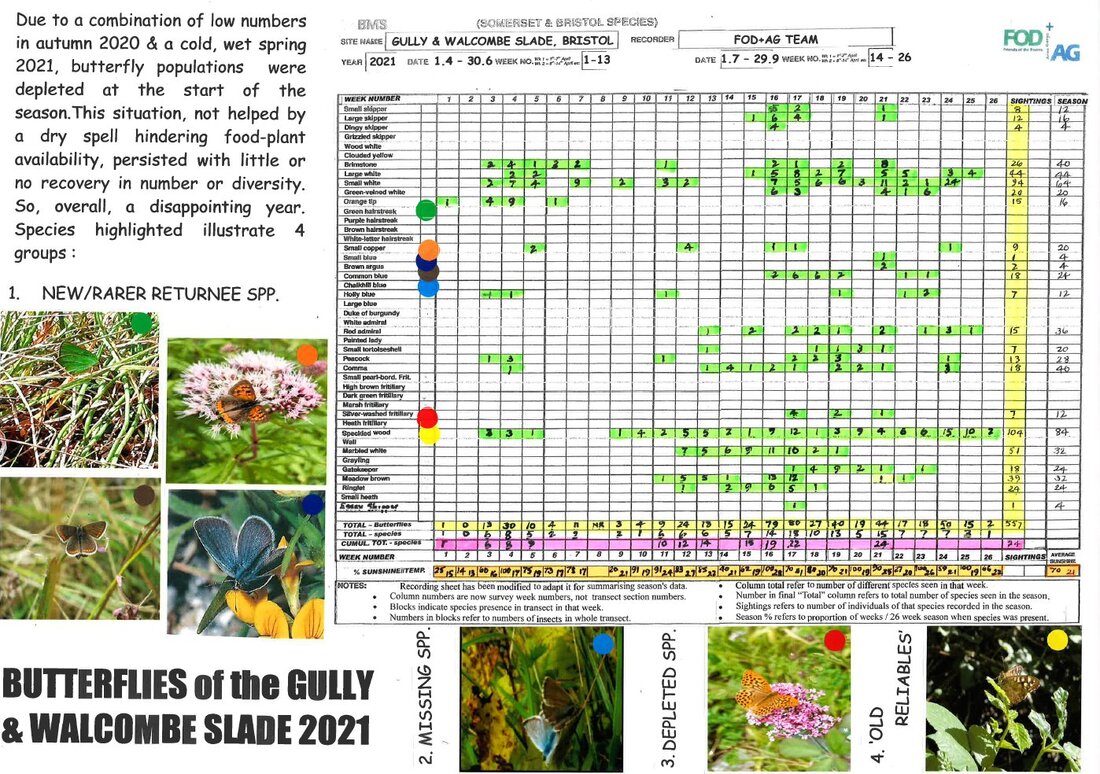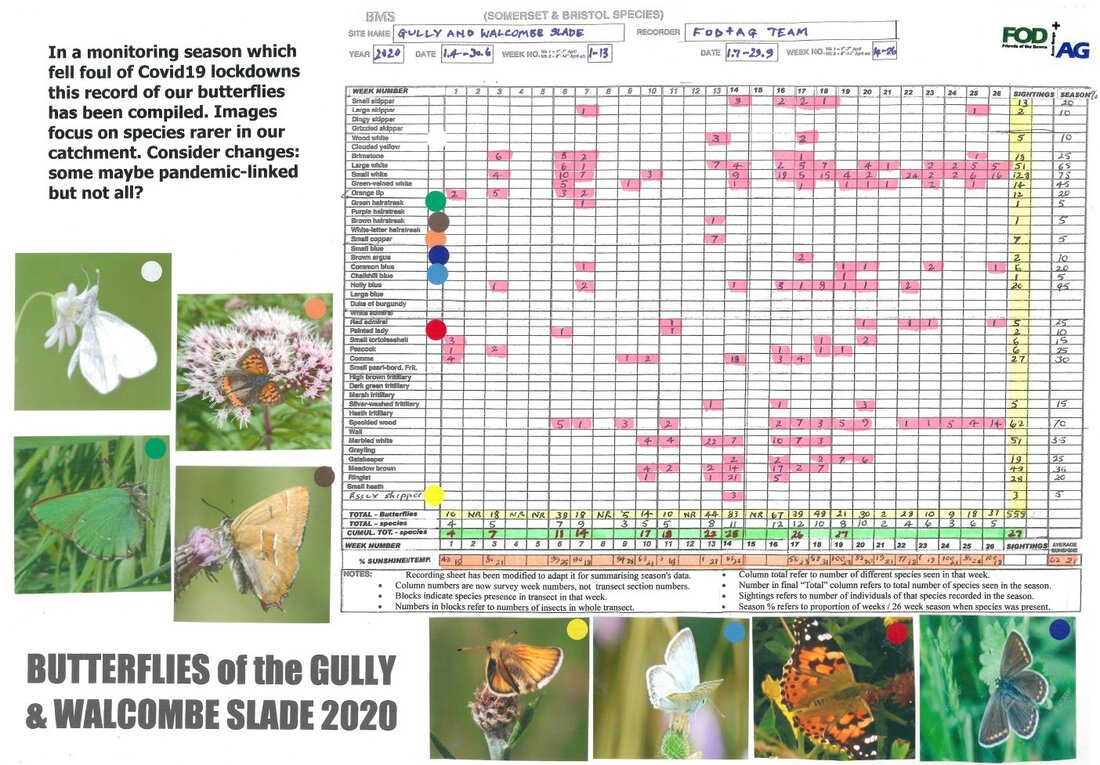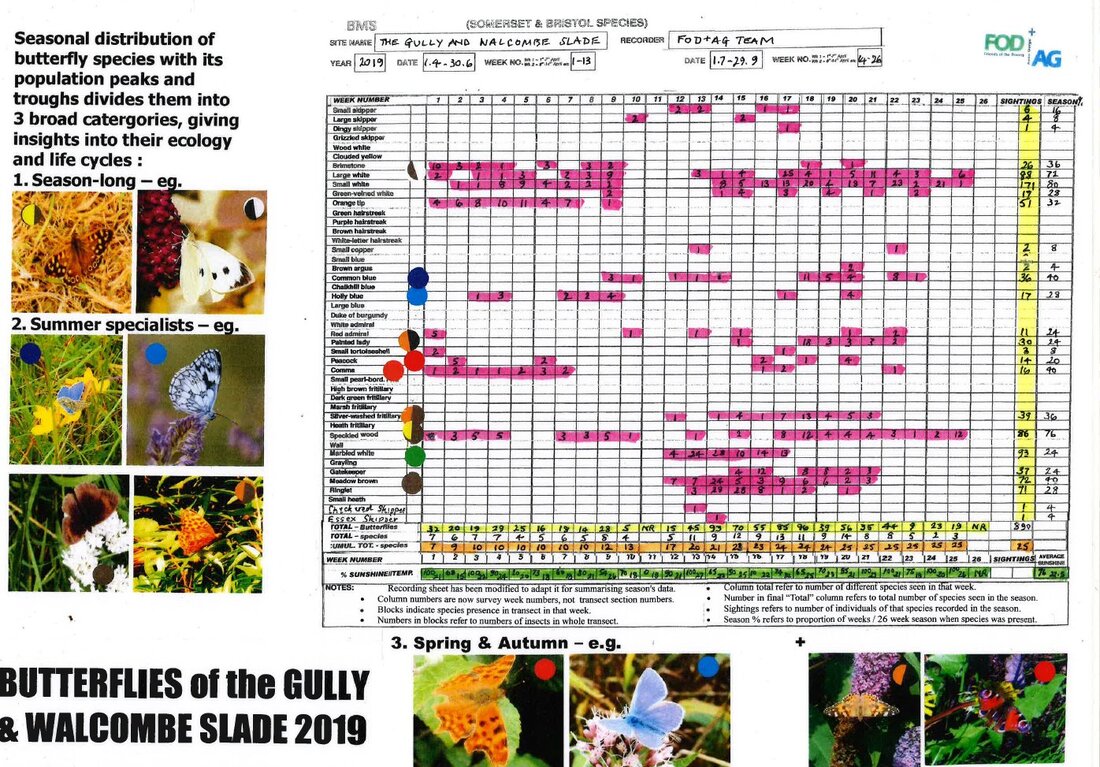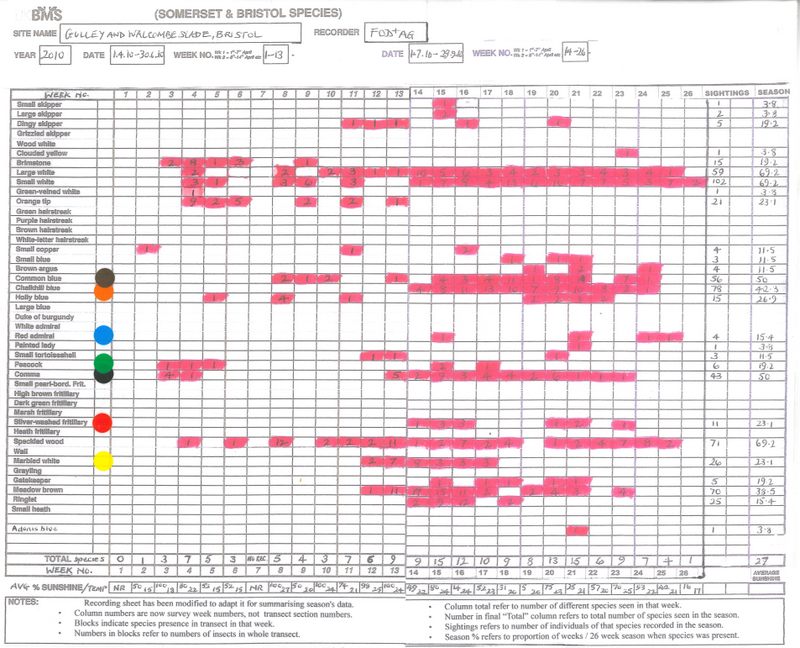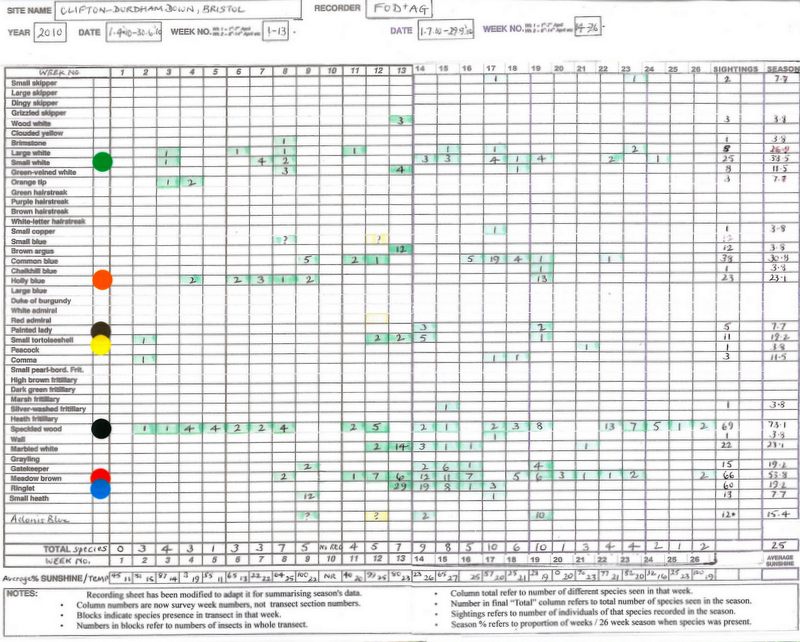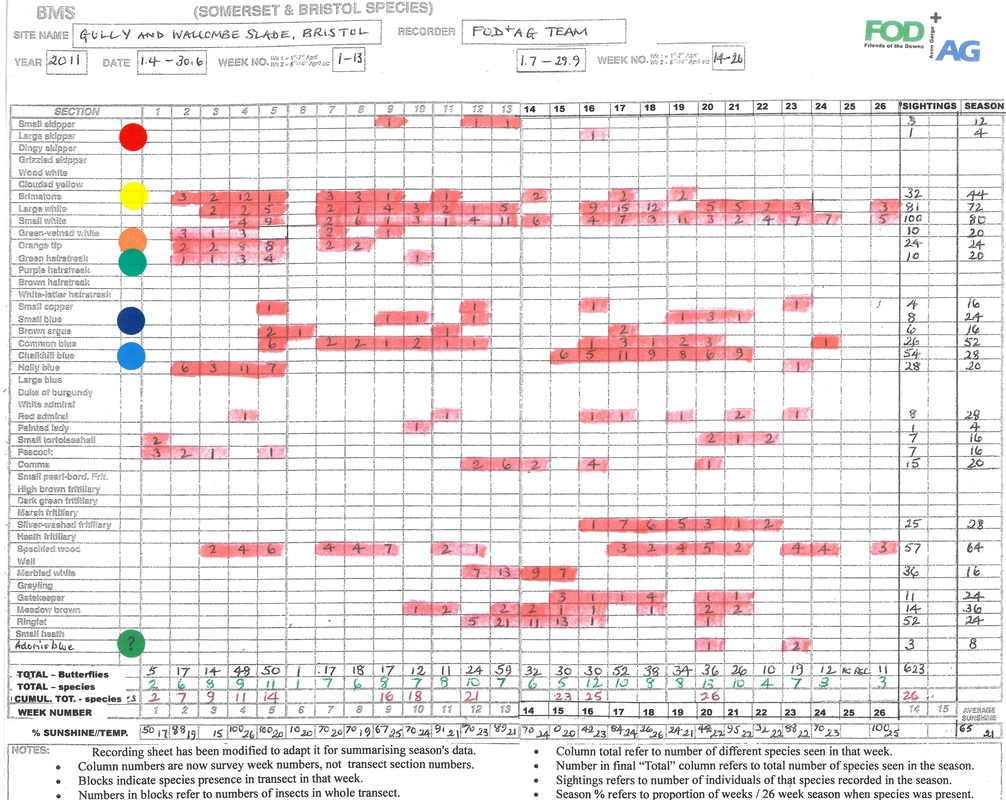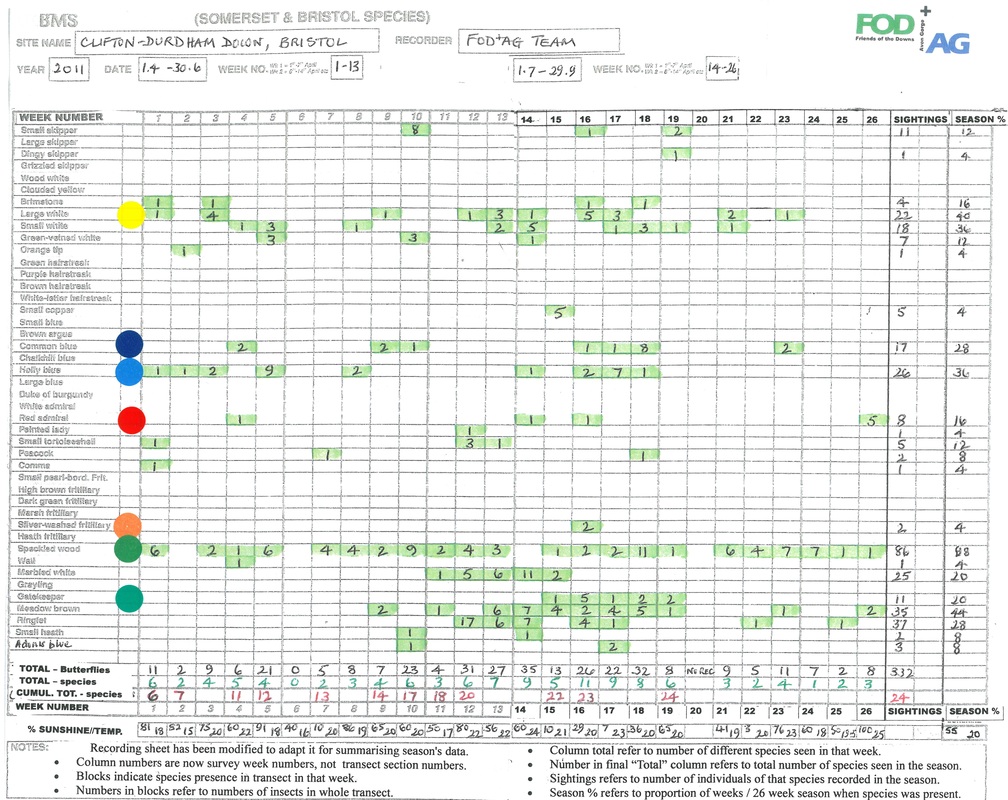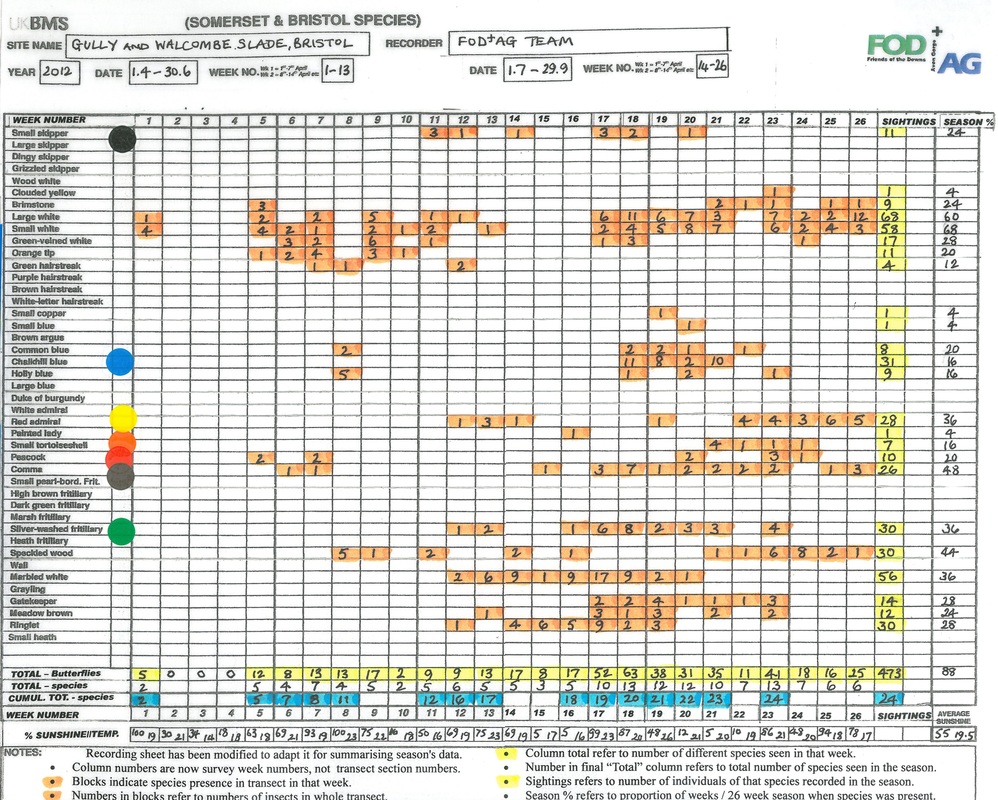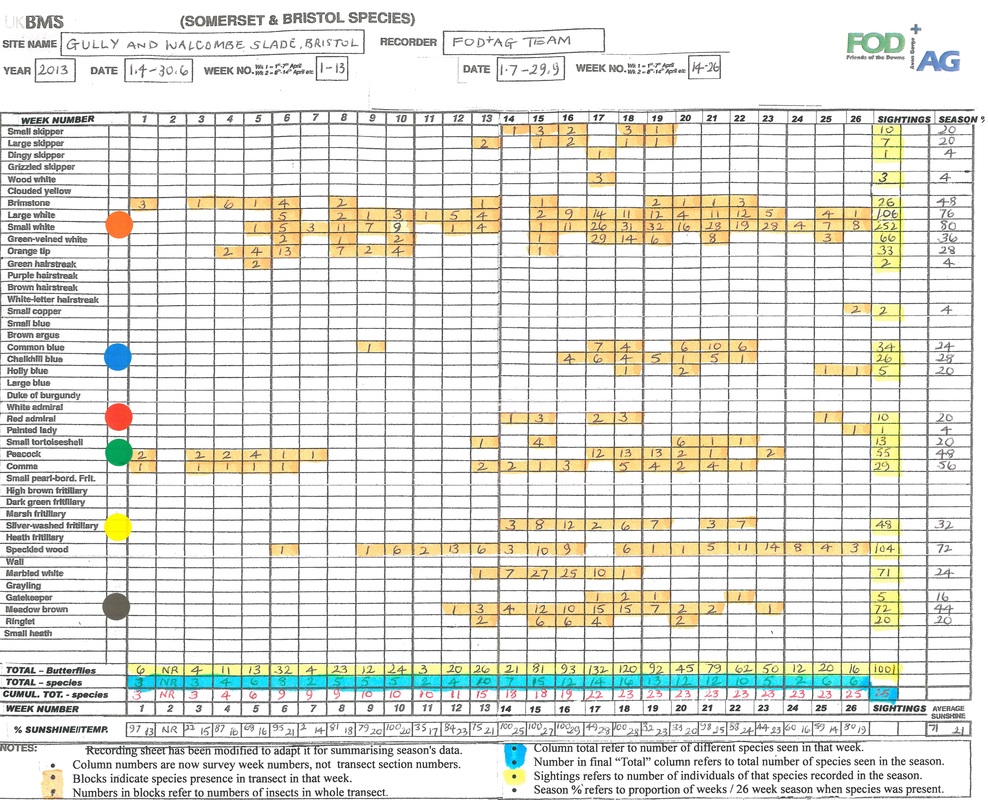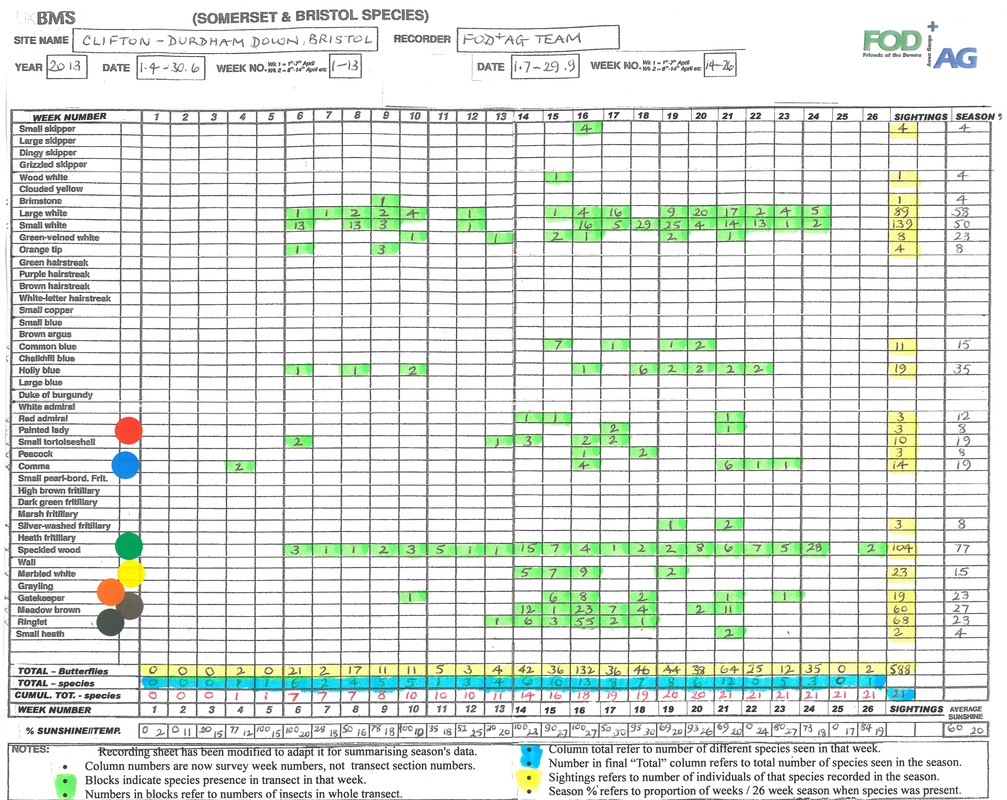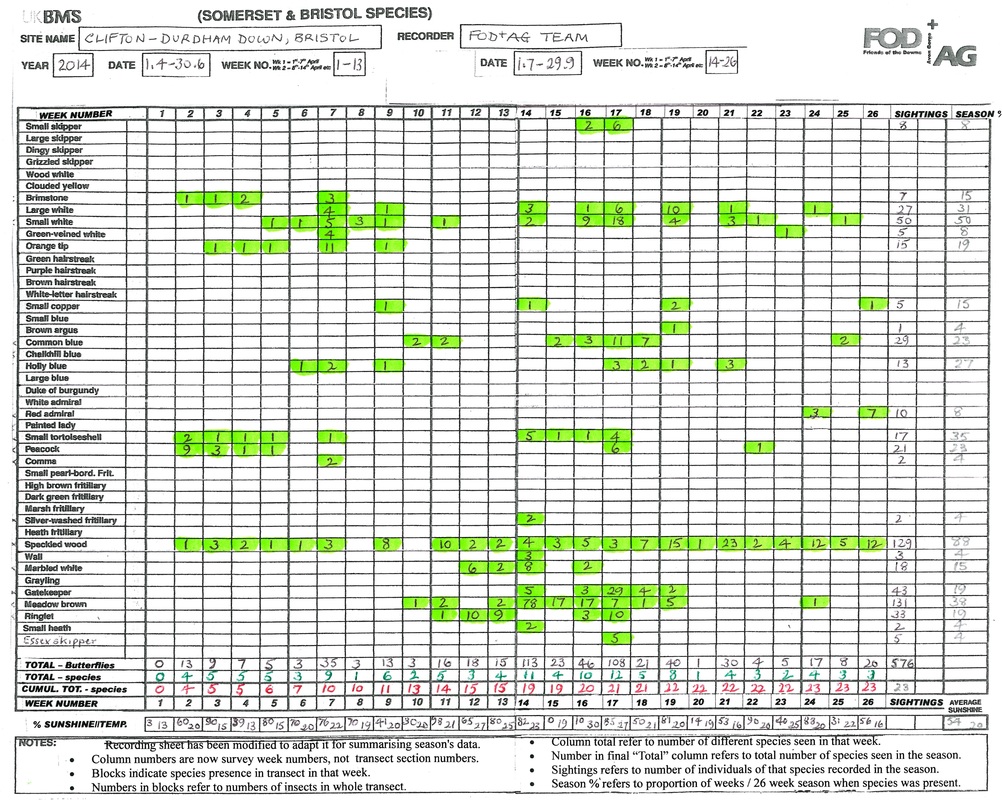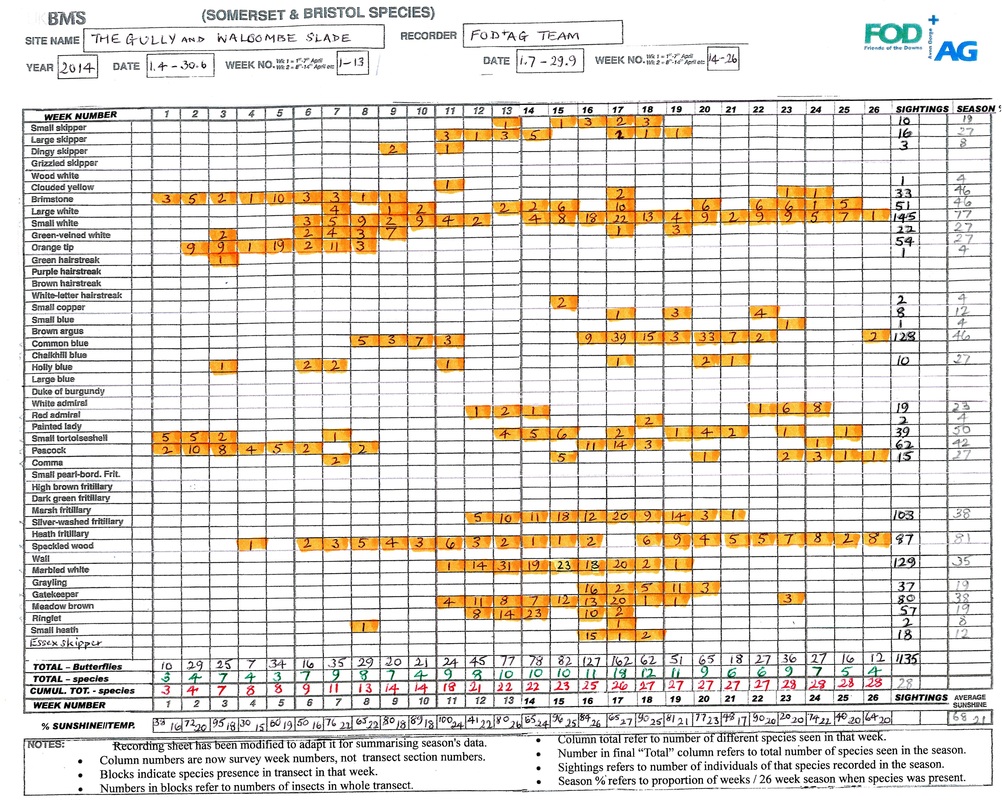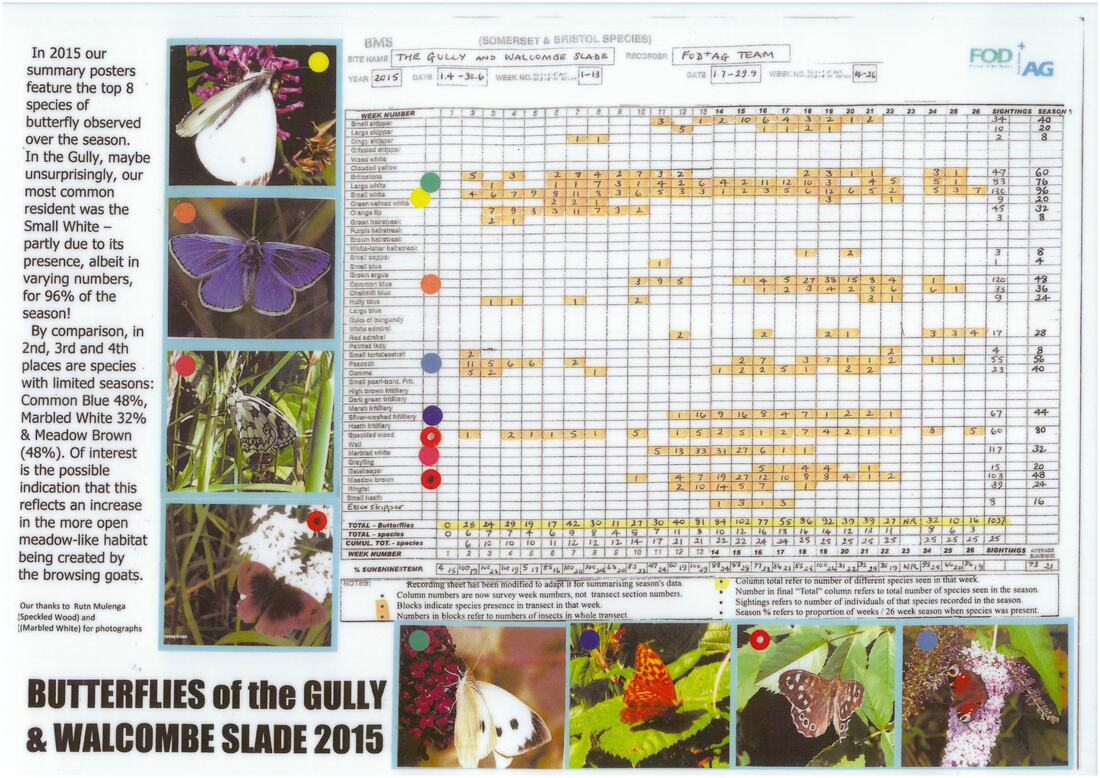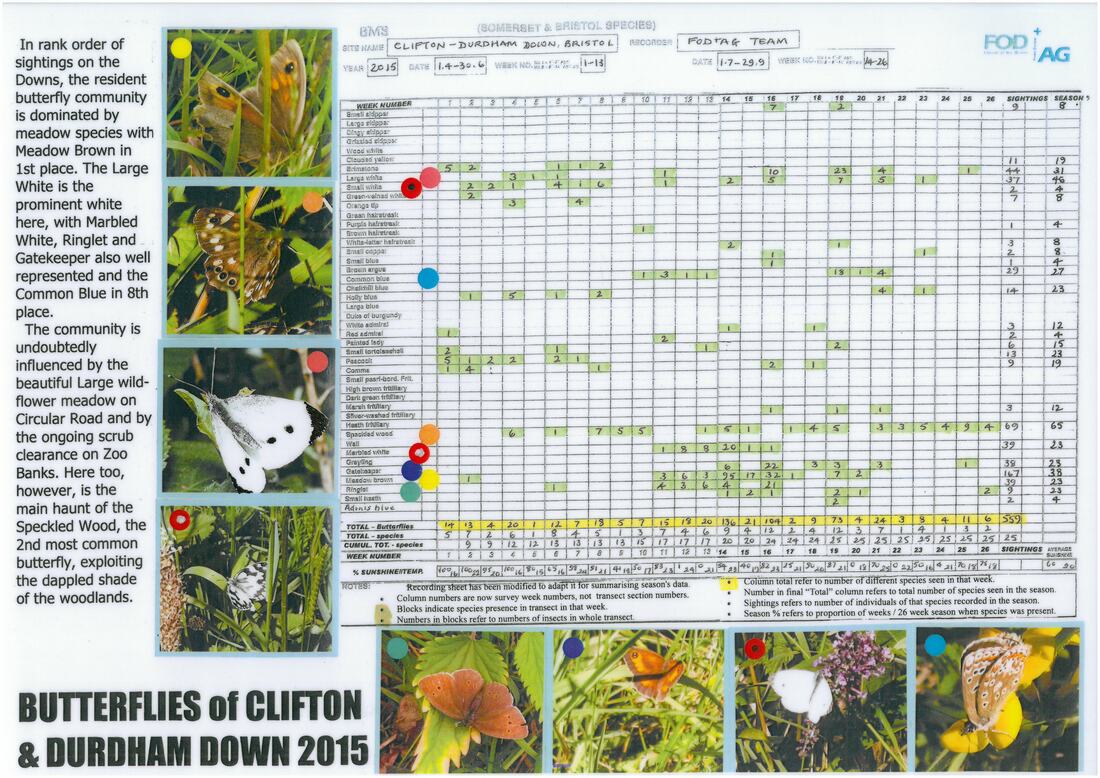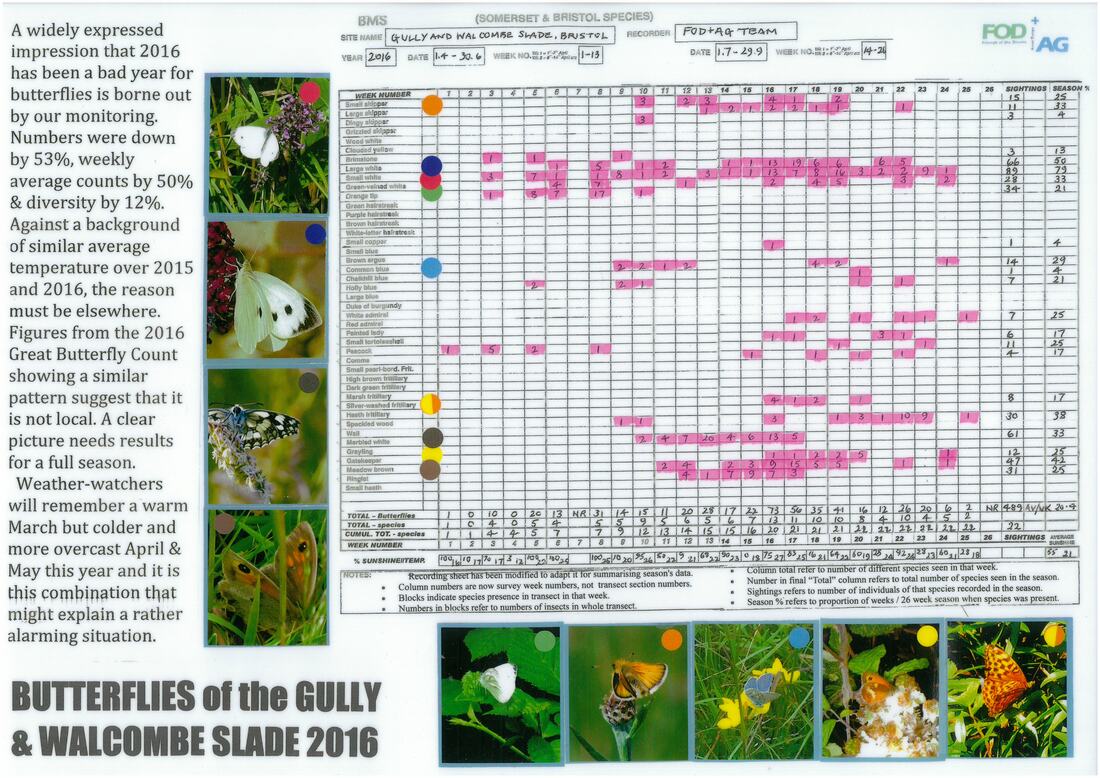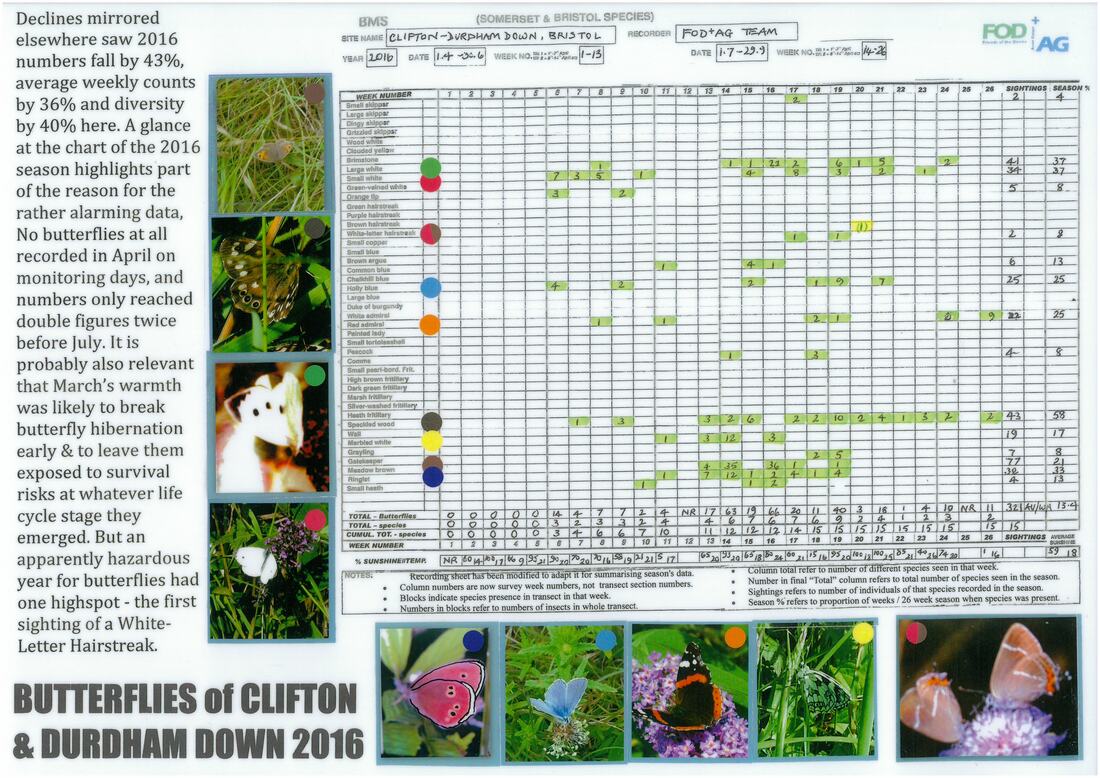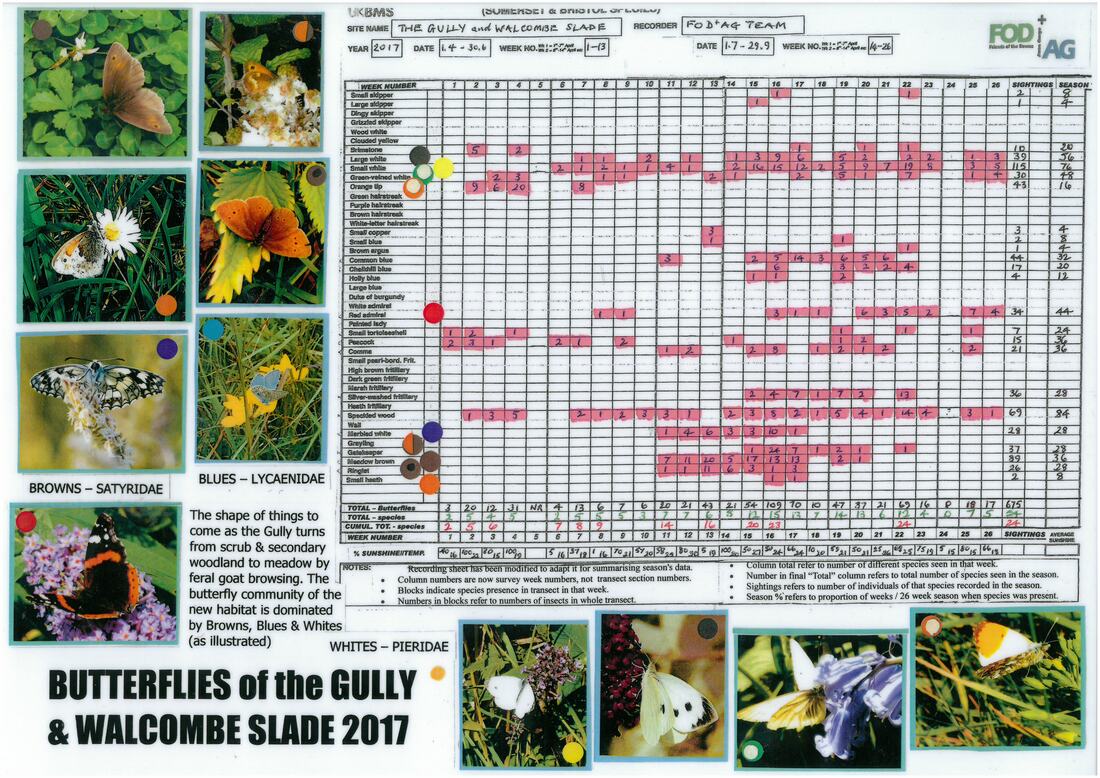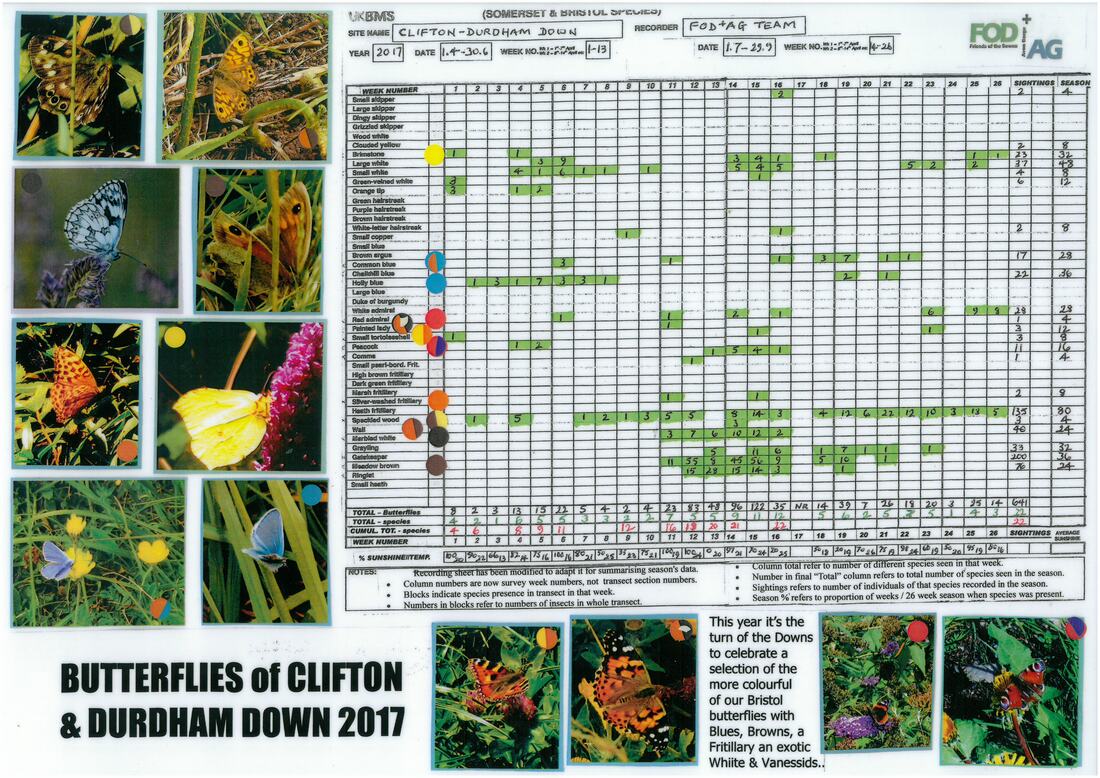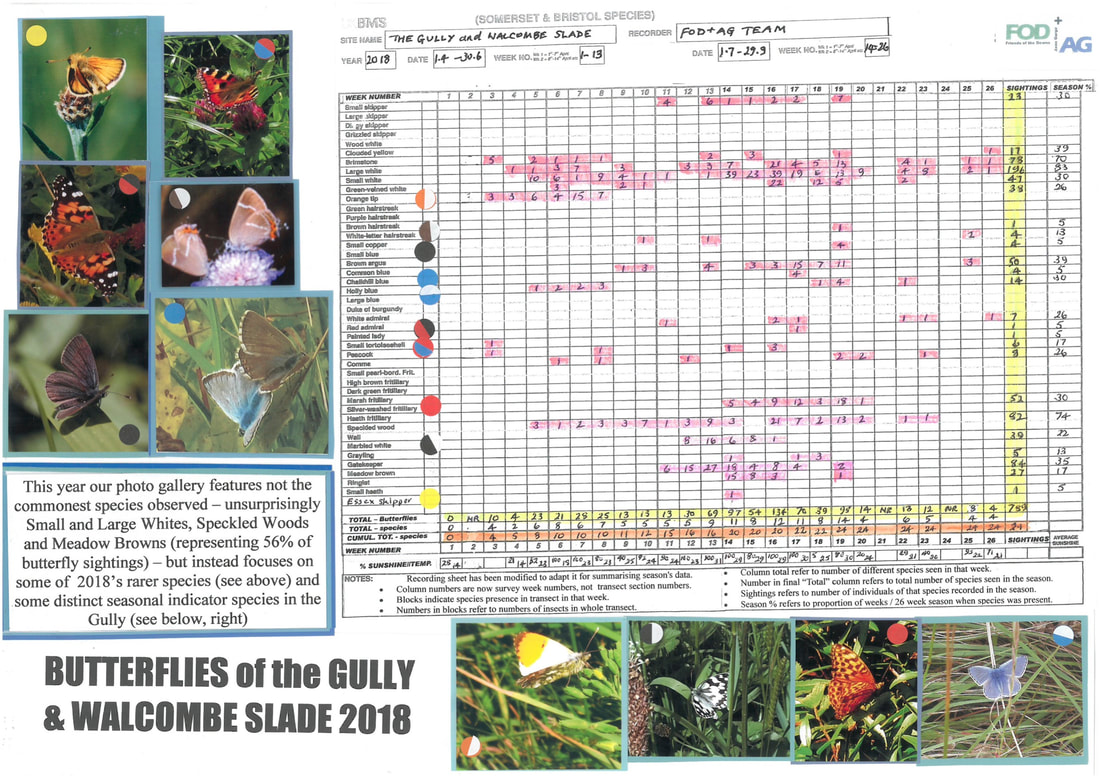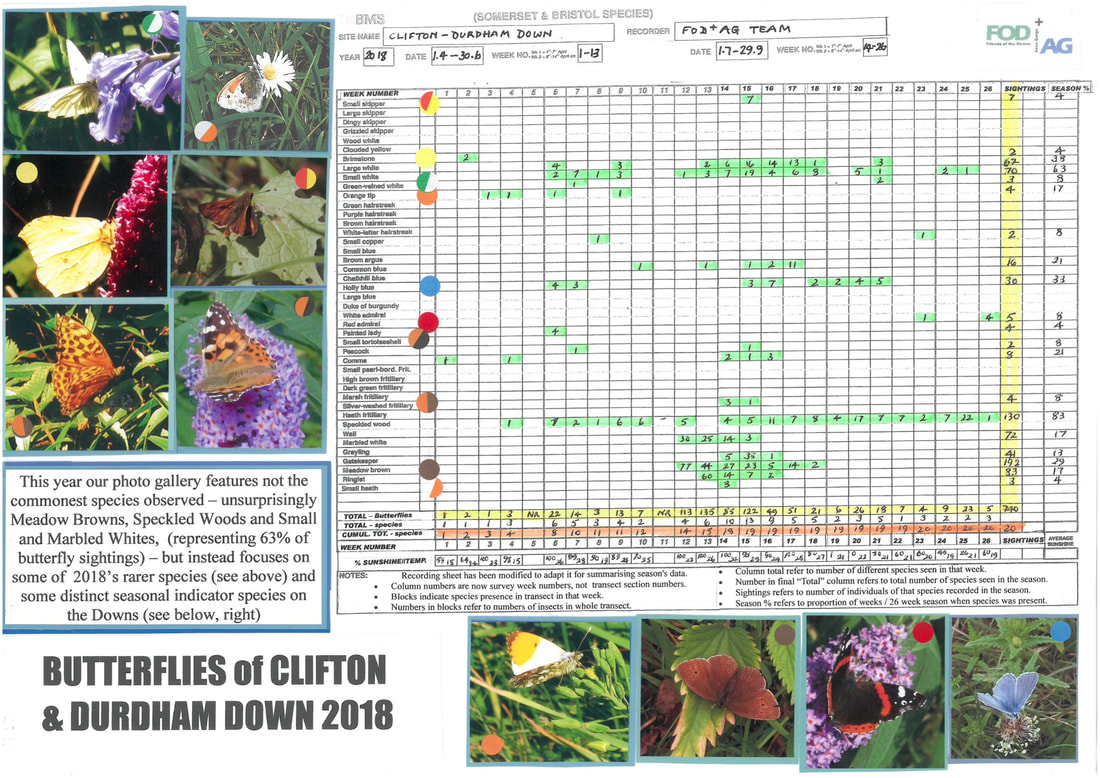Butterflies
Members of the Friends of the Downs and Avon Gorge survey the butterflies here from April to September.
see below the records of what has been seen.
Members of the Friends of the Downs and Avon Gorge survey the butterflies here from April to September.
see below the records of what has been seen.
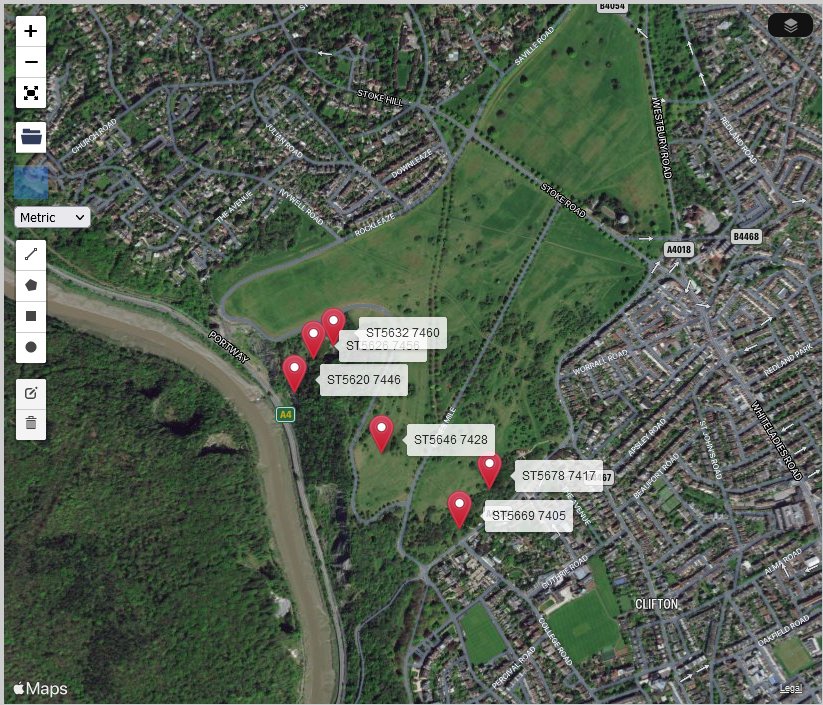
Butterflies
Butterflies of Zoo Banks Grid reference ST5678 7417
A stroll south along Zoo Banks takes in areas of woodland edge, scrub and meadow. With the range of habitats a variety of butterfly species may be seen. Throughout the spring and summer, amongst the trees, speckled woods enjoy the dappled shade. In May and again in August and September, holly blues frequent the tree canopy.
Butterflies of Zoo Banks 2 Grid reference ST5669 7405
In April and July to September, look out for orange tips, peacocks, small tortoiseshells, commas and brimstones. From May through to August, scan the open meadows for meadow browns, ringlets, gatekeepers, small and Essex skippers and most spectacularly, marbled whites. Common blues are not unusual and, if you’re very lucky, the occasional silver-washed fritillary may be encountered in woodland glades.
Butterflies of the Main Wildflower Meadow Grid reference ST5646 7428
This nowadays relatively rare habitat, calcareous meadow, is at its best for both flowers and butterflies between May and August. A circular meander starting northwards from opposite the Peregrine Watch Point will be rewarded with, as the season progresses, views of cowslips, orchids, oxeye daisies, yellow rattle, bird’s-foot-trefoil, dropwort, goat’s-beard and knapweed amongst a wide variety of grasses. The most frequent butterfly species here will be meadow browns, ringlets, gatekeepers, marbled whites and common blues. In amongst the almost ubiquitous small and large whites, be on the lookout for the slightly more exotically coloured orange tips and green-veined whites.
Butterflies of the Gully ST5620 7446
This steep-sided comb, leading in a roughly N-S direction from the Downs plateau to the foot of the Avon Gorge, is a warm and sheltered habitat in the process of being returned from successional scrub and secondary woodland to its original calcareous grassland by a small herd of feral goats. Amongst the butterflies which make their home here you might expect to see all of the species seen on the Downs, but frequently in higher numbers. Since the arrival of the goats there have been changes in the plant communities, so peacocks, red admirals and small tortoiseshells are more likely to be seen in the quarry at the foot of the Gully in April and then again from August through September.
Butterflies of the Gully 2 Grid reference ST5626 7456
Along the central path from June to August, meadow species should be well represented including small, large and Essex skippers and in these summer months you could count yourself unlucky if you do not see the characteristic swooping flight of the silver-washed fritillary and comma. In addition a number of less common species have been recorded here including green hairstreaks, for a short period in the early spring and clouded yellows and painted ladies, as occasional visitors.
Butterflies of the Gully 3 Grid reference ST5632 7460
Amongst the area’s most treasured species are chalk-hill blues and small blues, both of which have disappeared from this site in the past, the latter for 50 years and the former for 15. Both have returned since the turn of the millennium and in summer months, the chalk-hill blues can often be found on the open, south-facing scree slopes below, and in the small meadow area at the Gully viewpoint. If you manage to spot a small blue, however, we would like to hear about it! www.fodag.org
Butterflies of Zoo Banks Grid reference ST5678 7417
A stroll south along Zoo Banks takes in areas of woodland edge, scrub and meadow. With the range of habitats a variety of butterfly species may be seen. Throughout the spring and summer, amongst the trees, speckled woods enjoy the dappled shade. In May and again in August and September, holly blues frequent the tree canopy.
Butterflies of Zoo Banks 2 Grid reference ST5669 7405
In April and July to September, look out for orange tips, peacocks, small tortoiseshells, commas and brimstones. From May through to August, scan the open meadows for meadow browns, ringlets, gatekeepers, small and Essex skippers and most spectacularly, marbled whites. Common blues are not unusual and, if you’re very lucky, the occasional silver-washed fritillary may be encountered in woodland glades.
Butterflies of the Main Wildflower Meadow Grid reference ST5646 7428
This nowadays relatively rare habitat, calcareous meadow, is at its best for both flowers and butterflies between May and August. A circular meander starting northwards from opposite the Peregrine Watch Point will be rewarded with, as the season progresses, views of cowslips, orchids, oxeye daisies, yellow rattle, bird’s-foot-trefoil, dropwort, goat’s-beard and knapweed amongst a wide variety of grasses. The most frequent butterfly species here will be meadow browns, ringlets, gatekeepers, marbled whites and common blues. In amongst the almost ubiquitous small and large whites, be on the lookout for the slightly more exotically coloured orange tips and green-veined whites.
Butterflies of the Gully ST5620 7446
This steep-sided comb, leading in a roughly N-S direction from the Downs plateau to the foot of the Avon Gorge, is a warm and sheltered habitat in the process of being returned from successional scrub and secondary woodland to its original calcareous grassland by a small herd of feral goats. Amongst the butterflies which make their home here you might expect to see all of the species seen on the Downs, but frequently in higher numbers. Since the arrival of the goats there have been changes in the plant communities, so peacocks, red admirals and small tortoiseshells are more likely to be seen in the quarry at the foot of the Gully in April and then again from August through September.
Butterflies of the Gully 2 Grid reference ST5626 7456
Along the central path from June to August, meadow species should be well represented including small, large and Essex skippers and in these summer months you could count yourself unlucky if you do not see the characteristic swooping flight of the silver-washed fritillary and comma. In addition a number of less common species have been recorded here including green hairstreaks, for a short period in the early spring and clouded yellows and painted ladies, as occasional visitors.
Butterflies of the Gully 3 Grid reference ST5632 7460
Amongst the area’s most treasured species are chalk-hill blues and small blues, both of which have disappeared from this site in the past, the latter for 50 years and the former for 15. Both have returned since the turn of the millennium and in summer months, the chalk-hill blues can often be found on the open, south-facing scree slopes below, and in the small meadow area at the Gully viewpoint. If you manage to spot a small blue, however, we would like to hear about it! www.fodag.org
| Butterfly survey of clifton and durdham down 2022.pdf | |
| File Size: | 1446 kb |
| File Type: | |
| Butterfly survey of the Gully and Walcombe Slade 2022.pdf | |
| File Size: | 887 kb |
| File Type: | |
| Butterfly survey 2021 downs.pdf | |
| File Size: | 407 kb |
| File Type: | |
| Butterfly survey 2021 gully.pdf | |
| File Size: | 417 kb |
| File Type: | |
| Clifton and Durdham Downs butterfly survey 2020.pdf | |
| File Size: | 405 kb |
| File Type: | |
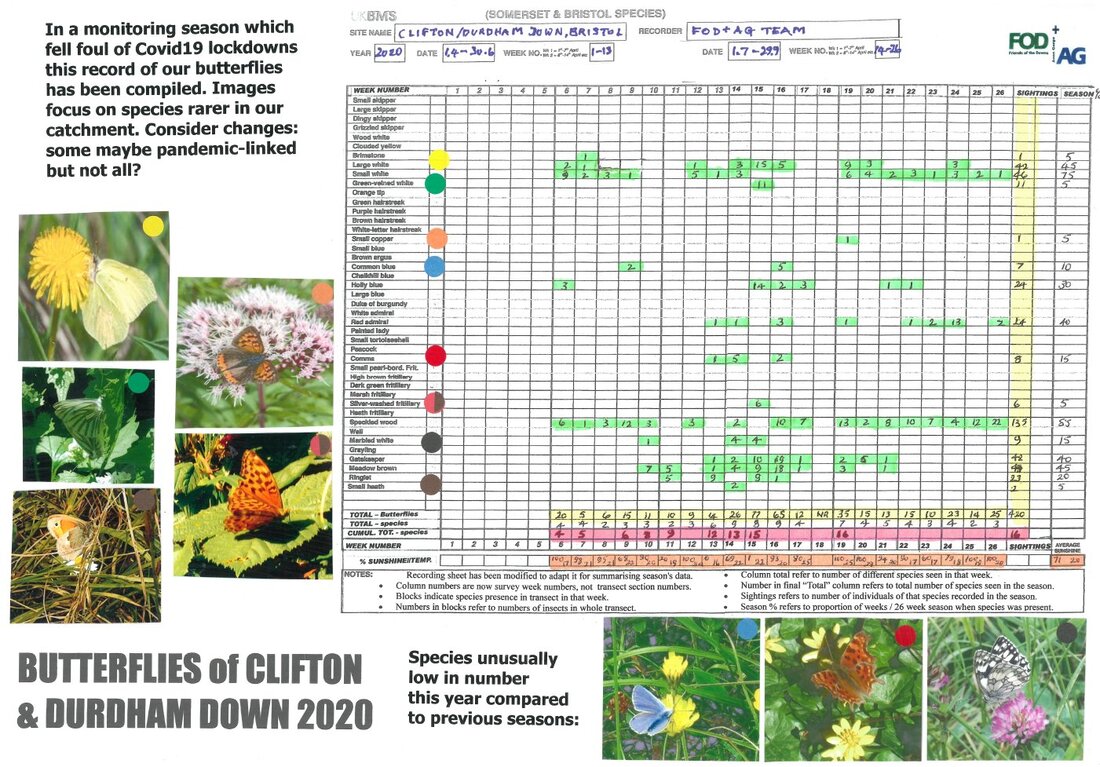
| The Gulley and Walcombe Slade butterfly survey 2020.pdf | |
| File Size: | 379 kb |
| File Type: | |
| downs and gully survey posters 2019.pdf | |
| File Size: | 849 kb |
| File Type: | |
Proudly powered by Weebly

